Do you have a question about the Cessna 172SPHUSR05 and is the answer not in the manual?
Lists maximum ramp, takeoff, and landing weights for normal and utility categories.
Details airspeed limitations (Vne, Vno, Va, Vfe) and indicator color codes and significance.
Details on engine manufacturer, model, maximum power, and operating limits.
Specifies maximum ramp, takeoff, and landing weights for normal and utility categories.
Defines CG range for normal and utility categories, including forward, aft limits, and reference datum.
Lists load factors for normal and utility categories, including design load factors and structure compliance.
Specifies total fuel capacity, usable fuel, unusable fuel, and approved fuel grades.
Lists recommended airspeeds for various emergency operations like engine failure and precautionary landings.
Immediate action items for engine failure during takeoff roll and after takeoff.
Procedures for emergency landing without engine power and precautionary landing with engine power.
Procedures for engine fires during start-up and in-flight, and electrical fires.
Procedure for recovery from an inadvertent spin.
Lists recommended airspeeds for takeoff, climb, cruise, and landing phases of normal flight.
Checklist for pre-flight inspection, covering cabin, empennage, wings, and nose components.
Checklist items before starting the engine, including pre-flight inspection and avionics setup.
Step-by-step procedures for starting the engine using battery or external power.
Checklist for actions to perform before takeoff, including ground checks and system configurations.
Procedures for normal and short field takeoffs, including flap settings and climb speeds.
Guidelines for performing cruise flight, including power settings, altitudes, and leaning techniques.
Description of stall characteristics and approved procedures for intentional spins.
Procedures for normal, short field, and balked landings.
Guidance on using takeoff distance charts, including corrections for weight, altitude, temperature, and wind.
How to select cruising altitude and power settings based on trip length, winds, and performance charts.
Method for estimating total fuel requirements, including climb fuel and temperature corrections.
Procedures for estimating landing distances, similar to takeoff charts.
Stall speeds at 2550 pounds for different flap settings and center of gravity positions.
Tables providing takeoff distances for short fields at different weights and temperatures.
Lists maximum ramp, takeoff, and landing weights for normal and utility categories.
Details airspeed limitations (Vne, Vno, Va, Vfe) and indicator color codes and significance.
Details on engine manufacturer, model, maximum power, and operating limits.
Specifies maximum ramp, takeoff, and landing weights for normal and utility categories.
Defines CG range for normal and utility categories, including forward, aft limits, and reference datum.
Lists load factors for normal and utility categories, including design load factors and structure compliance.
Specifies total fuel capacity, usable fuel, unusable fuel, and approved fuel grades.
Lists recommended airspeeds for various emergency operations like engine failure and precautionary landings.
Immediate action items for engine failure during takeoff roll and after takeoff.
Procedures for emergency landing without engine power and precautionary landing with engine power.
Procedures for engine fires during start-up and in-flight, and electrical fires.
Procedure for recovery from an inadvertent spin.
Lists recommended airspeeds for takeoff, climb, cruise, and landing phases of normal flight.
Checklist for pre-flight inspection, covering cabin, empennage, wings, and nose components.
Checklist items before starting the engine, including pre-flight inspection and avionics setup.
Step-by-step procedures for starting the engine using battery or external power.
Checklist for actions to perform before takeoff, including ground checks and system configurations.
Procedures for normal and short field takeoffs, including flap settings and climb speeds.
Guidelines for performing cruise flight, including power settings, altitudes, and leaning techniques.
Description of stall characteristics and approved procedures for intentional spins.
Procedures for normal, short field, and balked landings.
Guidance on using takeoff distance charts, including corrections for weight, altitude, temperature, and wind.
How to select cruising altitude and power settings based on trip length, winds, and performance charts.
Method for estimating total fuel requirements, including climb fuel and temperature corrections.
Procedures for estimating landing distances, similar to takeoff charts.
Stall speeds at 2550 pounds for different flap settings and center of gravity positions.
Tables providing takeoff distances for short fields at different weights and temperatures.
| Manufacturer | Cessna |
|---|---|
| Seating Capacity | 4 |
| Engine | Lycoming IO-360-L2A |
| Wingspan | 36 ft 1 in (11.0 m) |
| Max Cruise Speed | 124 knots (143 mph, 230 km/h) |
| Takeoff Distance (Ground Roll) | 960 ft (293 m) |
| Type | Single-engine Piston |
| Height | 8 ft 11 in (2.7 m) |
| Range | 696 nmi (801 mi, 1, 289 km) |
| Service Ceiling | 13, 500 ft (4, 100 m) |
| Fuel Capacity | 56 US gallons (212 liters) |
| Length | 27 ft 2 in (8.3 m) |
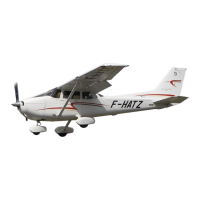
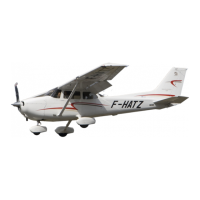
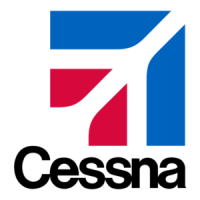

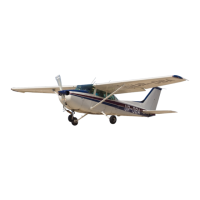



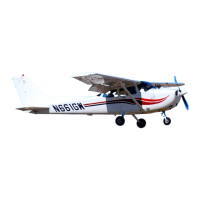
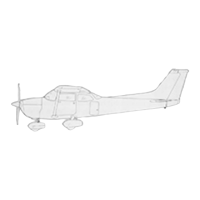
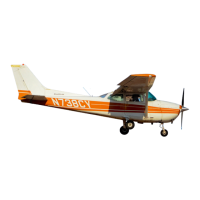
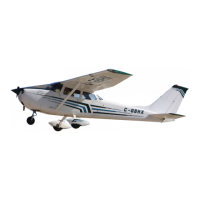
